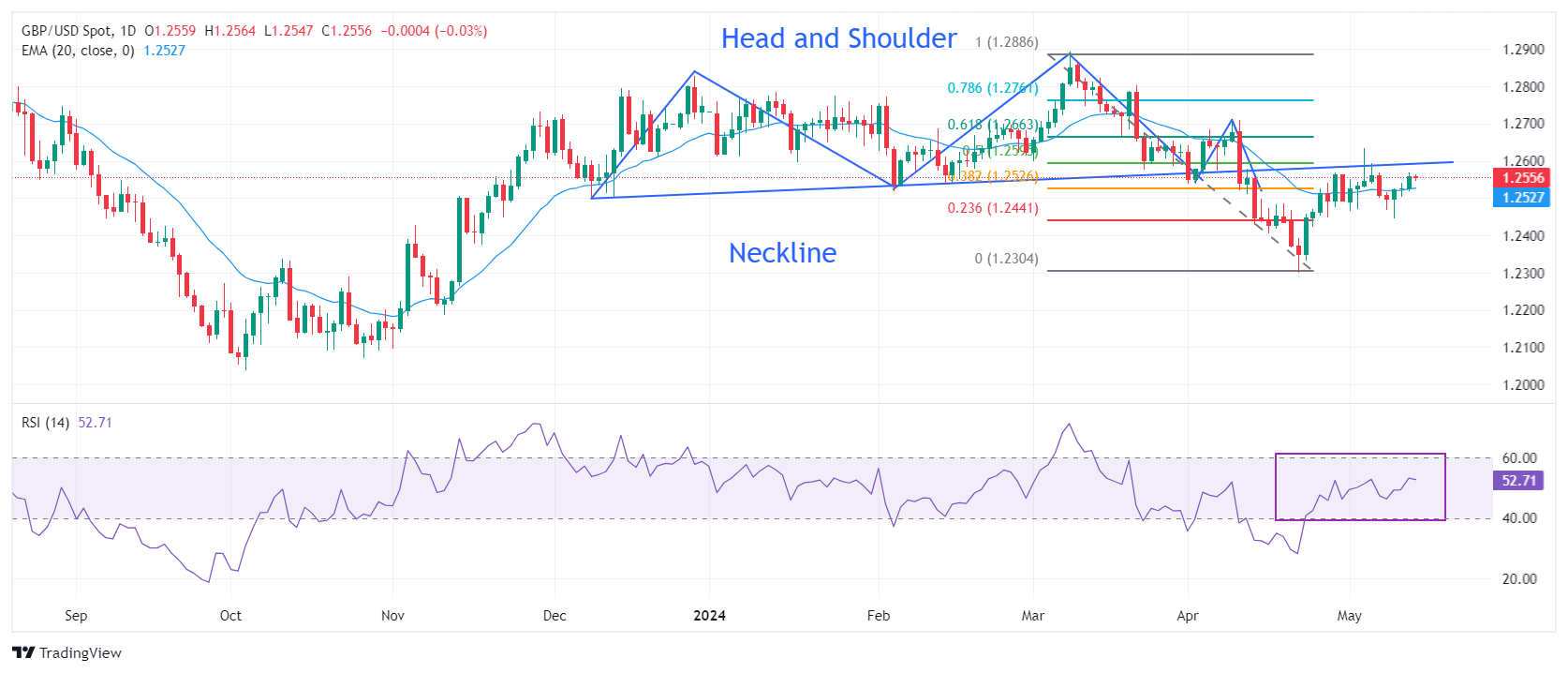Pound Sterling recovers as steady UK wage growth deepens uncertainty over BoE rate cuts

- The Pound Sterling recovers sharply from 1.2500 due to steady UK wage growth.
- UK employers laid off workers for the third time in a row but wage growth remains steady.
- The US Dollar consolidates ahead of US inflation, Retail Sales data for April.
The Pound Sterling (GBP) discovers strong buying interest near the psychological support of 1.2500 against the US Dollar in Tuesday’s London session. The GBP/USD pair rebounds as the impact of weak United Kingdom Employment data for three months ending in March was offset by steady wage growth. The United Kingdom (UK) Office for National Statistics (ONS) has reported that labor market has witnessed a drawdown for the third time in a row while wage growth momentum remains steady at relatively high levels.
UK employers laid off 177K workers, which was higher than the firing of 156K employees in the December-February period. The ILO Unemployment Rate rises to 4.3% as expected from the former reading of 4.2%. The labor market data clearly indicates that the economy is struggling to bear the consequences of higher interest rates by the Bank of England (BoE).
In the current scenario, the situation seems favorable for the BoE to begin reducing interest rates, as price pressures are also consistently softening. However, strong wage growth that is feeding service inflation will continue to remain a major concern for BoE policymakers.
Annual Average Earnings (both excluding and including bonuses) grew steadily by 6.0% and 5.7%, respectively, for the three months to March period. Investors anticipated Average Earnings, including bonuses, to decelerate to 5.3%.
After the labor market data, BoE Chief Economist commented, “Rates of pay growth remain quite well above what would be consistent for meeting the 2% inflation target sustainably.” Pill emphasized maintaining a restrictive stance on monetary policy that continues to buiild downside pressure on domestic inflation persistence. Over rate cuts, Pill commented that it is reasonable to believe that over summer we will see enough confidence to consider lowering interest rates.
Daily digest market movers: Pound Sterling recovers as BoE Pill sees rate-cuts reasonable over summer
- The Pound Sterling finds strong buying interest near 1.2500 against the US Dollar. The US Dollar Index (DXY), which tracks the US Dollar’s value against six major currencies, remains steady slightly above the weekly low at around 105.00. It has turned sideways around 105.20 as investors await the United States Producer Price Index (PPI) data for April, which will be published at 12:30 GMT.
- Annual headline PPI is forecasted to have grown by 2.2% from 2.1% in March. In the same period, the core PPI, which strips off volatile food and energy prices, is estimated to have grown by 2.4%, at the same pace as the previous month. Economists anticipate that monthly headline PPI rose at a higher pace of 0.3% from the prior reading of 0.2% with core reading growing steadily by 0.2%.
- This week, the US economic calendar is filled with top-tier data. The next move in the US Dollar will be majorly driven by the Consumer Price Index (CPI) and Retail Sales data for April, which will be published on Wednesday. The consumer inflation data will influence speculation about the Federal Reserve (Fed) returning to policy normalisation from the September meeting.
Technical Analysis: Pound Sterling aims to hold above 20-day EMA
The Pound Sterling exhibits strength near 1.2560 due to a strong near-term outlook. The GBP/USD pair remains comfortably established above the 20-day Exponential Moving Average (EMA), which trades around 1.2530. The pair has retraced 38.2% losses recorded from a 10-month high around 1.2900.
The Cable continues to face pressure near the neckline of the Head and Shoulder (H&S) chart pattern formed on a daily timeframe. On April 12, the pair fell sharply after breaking below the neckline of the H&S pattern plotted from December 8 low around 1.2500.
The 14-period Relative Strength Index (RSI) oscillates in the 40.00-60.00 range, suggesting indecisiveness among market participants.
Economic Indicator
Average Earnings Including Bonus (3Mo/Yr)
The Average Earnings Including Bonus, released by the UK Office of National Statistics, is a key short-term indicator of how levels of pay are changing within the UK economy. Generally, an increase in earnings is seen as bullish for the Pound Sterling (GBP), whereas a low reading is seen as bearish.
